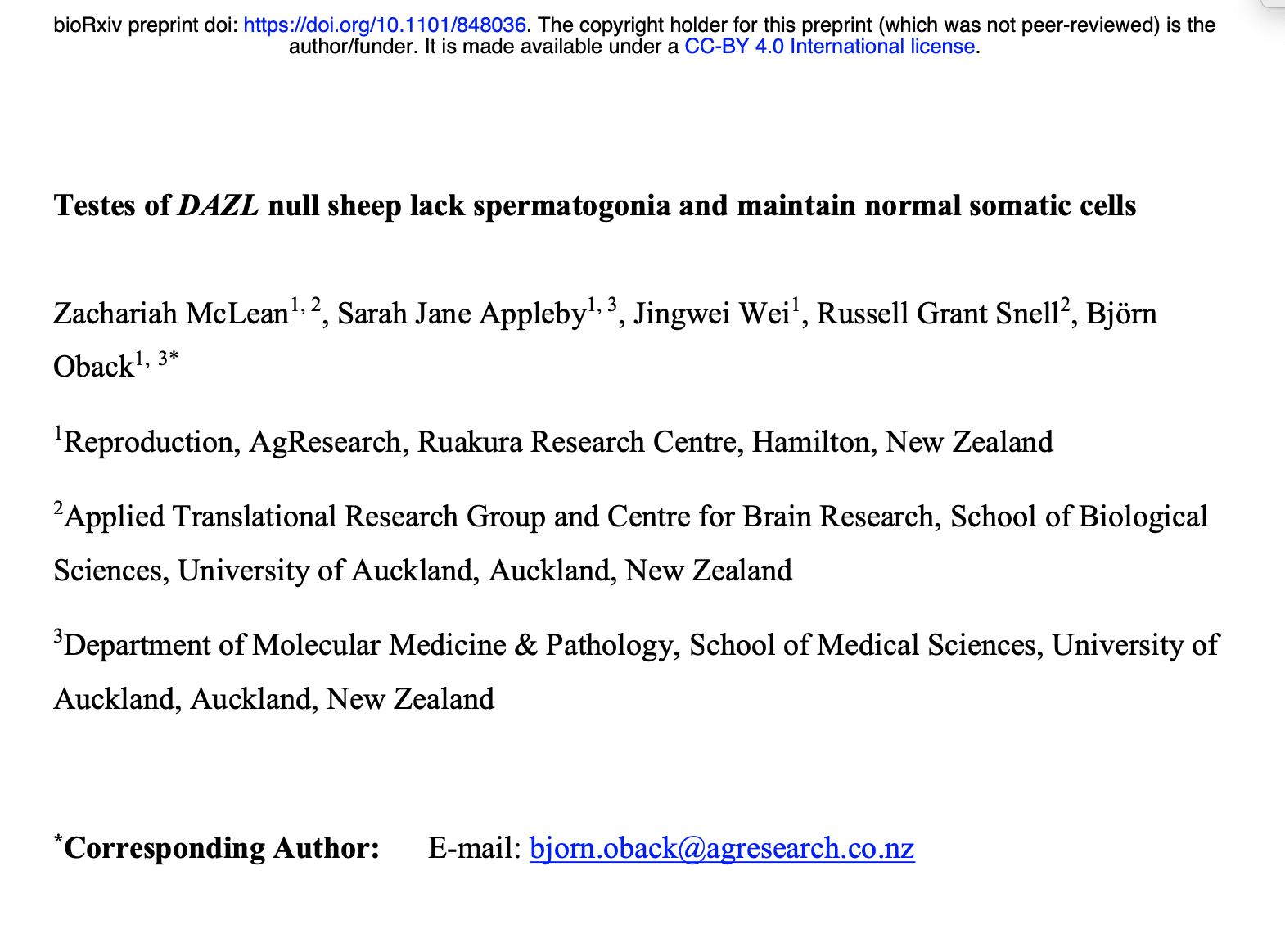
- February 15, 2021
Testes of DAZL null sheep lack spermatogonia and maintain normal somatic cells
Zachariah McLean, Sarah Jana Appleby, Jingwei Wei, Russell Grant Snell, Bjorn Oback|Reproduction, AgResearch, Ruakura Research Centre, Hamilton, New Zealand, Applied Translational Research Group and Centre for Brain Research, School of Biological Sciences, University of Auckland, Auckland, New Zealand, Department of Molecular Medicine and Pathology, School of Medical Sciences, University of Auckland, Auckland, New Zealand|bioRxiv preprint|2019| doi: https://doi.org/10.1101/848036
Multiplying the germ line can increase the number of offspring and allow accelerated genetic improvement for livestock breeding. Deletion of RNA binding protein DAZL can be done to generate germ-cell deficient host animals, thereby avoid mixing of donor and host germ cells that limits the rate of genetic improvements. In this study, gRNA-Cas9 mediated homology-directed repair was used to introduce DAZL loss-of-function mutation in male ovine fetal fibroblasts. To understand if the mutation was successful, snap-frozen testis parenchyma was homogenised and RNA was extracted for gene expression analysis. Relative quantification was carried out on Mic qPCR Cycler, taking reaction efficiency into account by amplification curve analysis. It was observed that all DAZL-null mall sheep lacked germ cells and somatic cells were morphologically intact and expressed normal levels of somatic cell-specific marker genes, indicating that the germ cell niche remained intact.